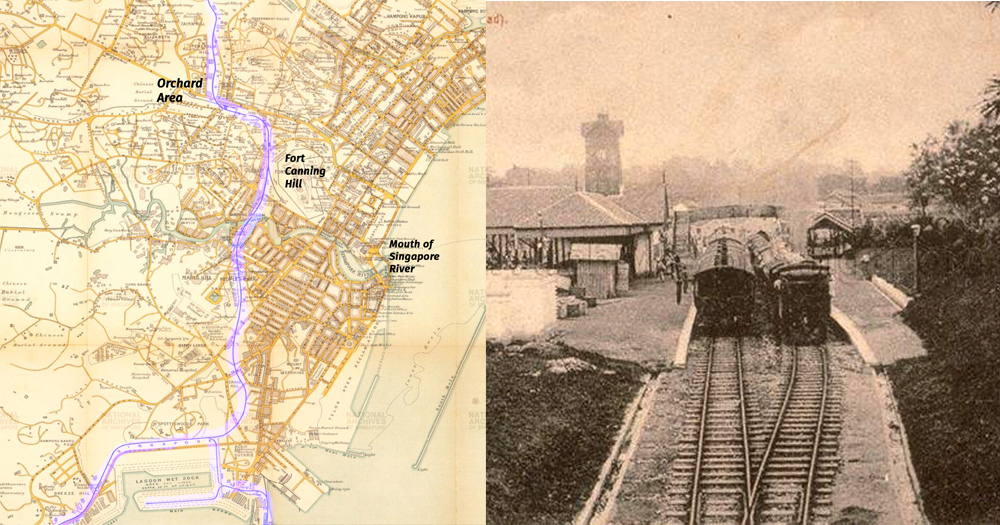An old map of Singapore city from 1913 clearly shows a railway line that runs from Keppel Road, crosses the Singapore River and Orchard Road, before heading up northwest towards Bukit Panjang and Woodlands.
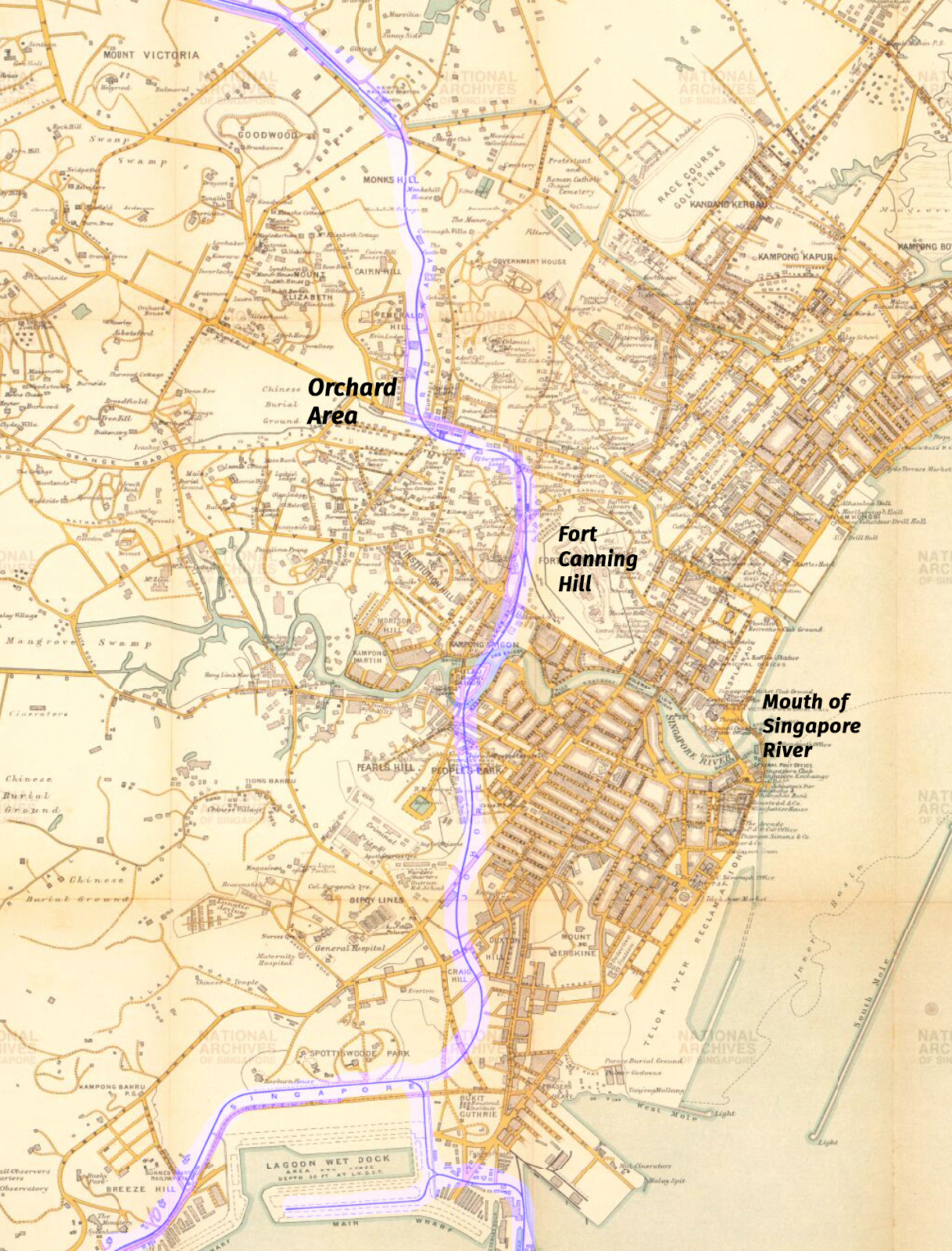 Detail from a 1913 map. Via NAS.
Detail from a 1913 map. Via NAS.
On the map (available in greater detail here), the railway line is labelled the Singapore-Johore Railway.
It was also known as the Singapore-Kranji Railway and the Singapore Government Railway.
However, this portion of the railway is no longer around today.
Tank Road to Woodlands
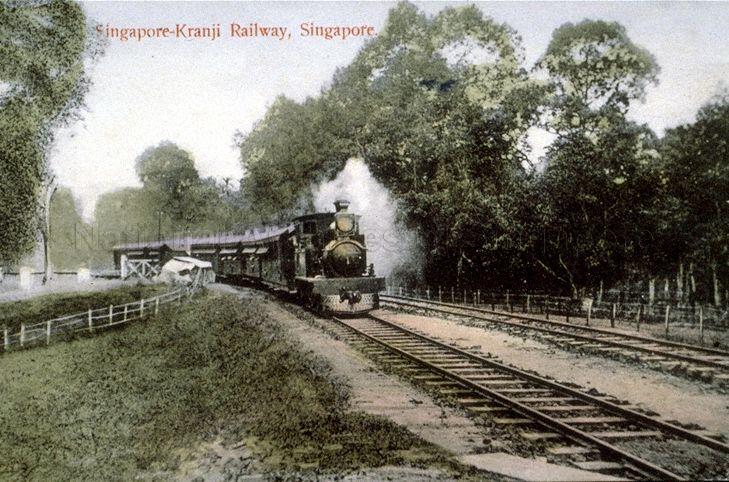
Peninsula Malaya was a treasure trove of natural resources, including tin and rubber.
Mined tin and harvested rubber needed to be transported to ports to be transported back to England and other parts of the world.
As early as 1869, the British administration had planned to build a railway line that would service the New Harbour, which is the present day Keppel Harbour.
The line opened in two phases in 1903.
At that time, the line had seven stations: Woodlands, Bukit Panjang, Bukit Timah, Holland Road, Cluny, Newton, and Tank Road.
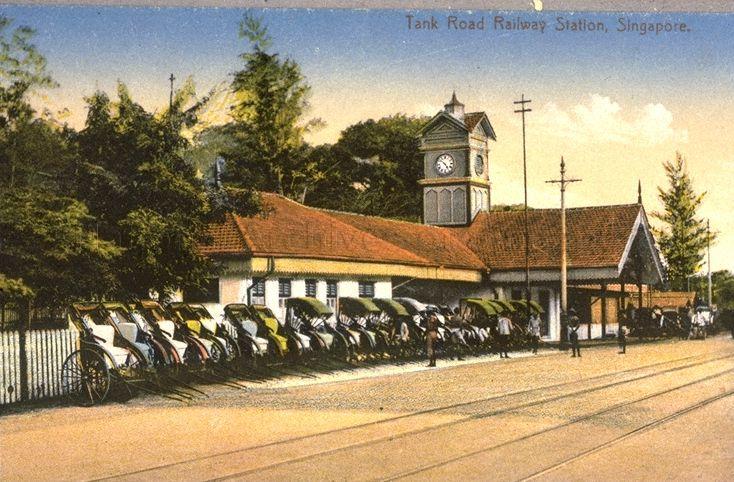 Tank Road Railway Station.
Tank Road Railway Station.
Tank Road station was the main terminus for people embarking on rail travel from Singapore Town.
By 1907, the line was extended to Pasir Panjang. By then, the stations were:
- Woodlands
- Bukit Panjang
- Bukit Timah
- Holland Road
- Cluny
- Newton
- Tank Road
- Borneo Wharf
- Pasir Panjang
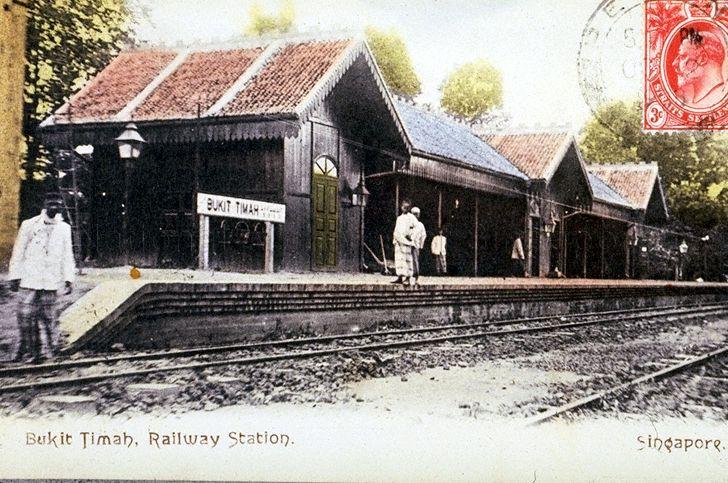 Bukit Timah Railway Station.
Bukit Timah Railway Station.
 Borneo Wharf.
Borneo Wharf.
Ferrying gamblers
Even before the railway was constructed, there was backlash against its construction.
There were fears that $1 million worth of public money was being used to finance a railway that was going to abet gamblers who headed to Johor to gamble.
Gambling in Johor was a lucrative activity for locals since the British administration banned gambling in Singapore.
Their fears weren't unfounded.
When the Causeway was completed in 1923, trains could finally cross the Johor Straits, bringing passengers to Johor and right into the arms of gambling den proprietors.
It didn't help that Johor gambling dens offered to pay for the return fares of customers -- usually between 3 and 8 cents per mile -- in order to get them to patronise their businesses on Sundays.
Soon, the railway saw its highest passenger volume on Sundays, with most of its passengers heading to Johor to patronise gambling farms.

By the 1930s, a new terminus was built at Tanjong Pagar: The Tanjong Pagar Railway Station.
The Tank Road-Bukit Timah railway line was subsequently dismantled, with the railway running along what we today know as the Green Corridor.
Top images via NAS
If you like what you read, follow us on Facebook, Instagram, Twitter and Telegram to get the latest updates.
